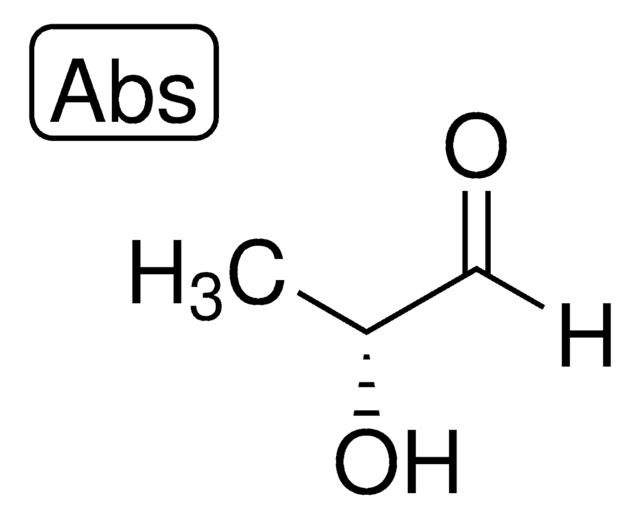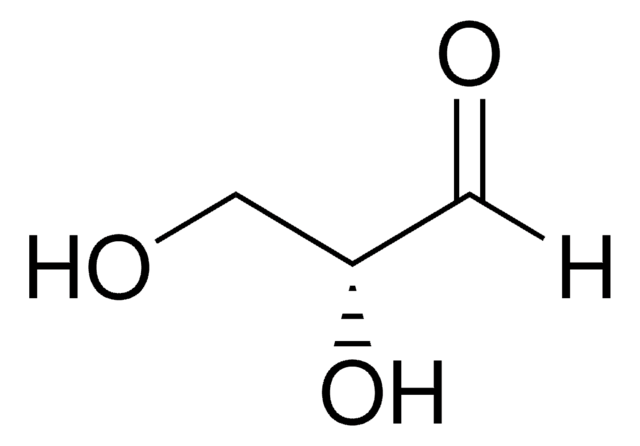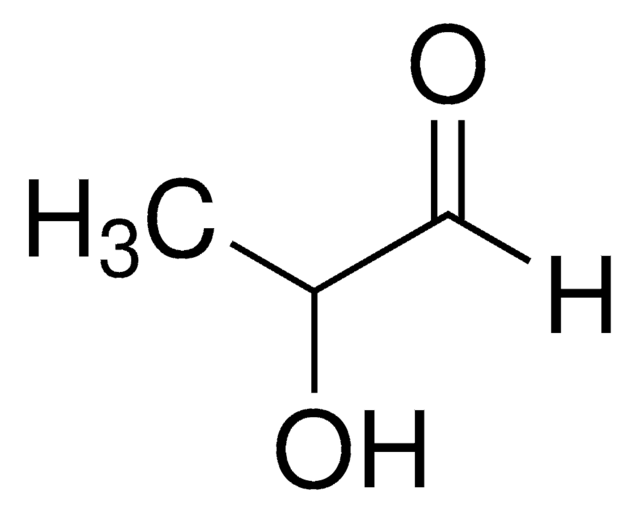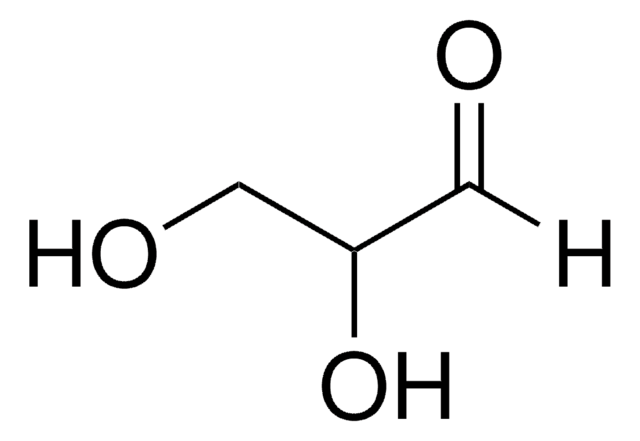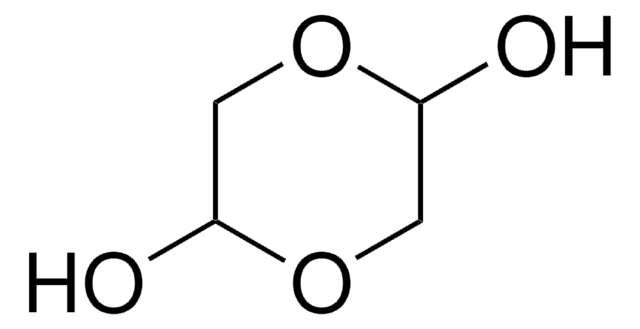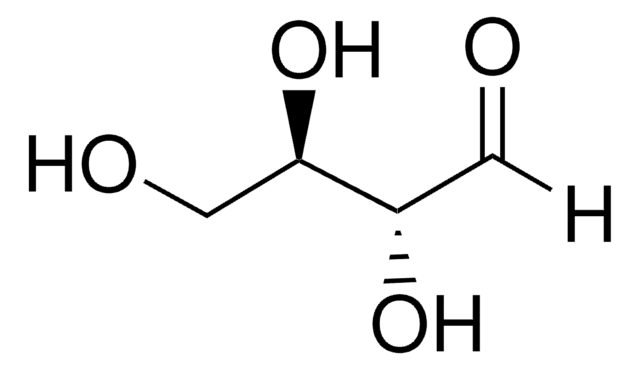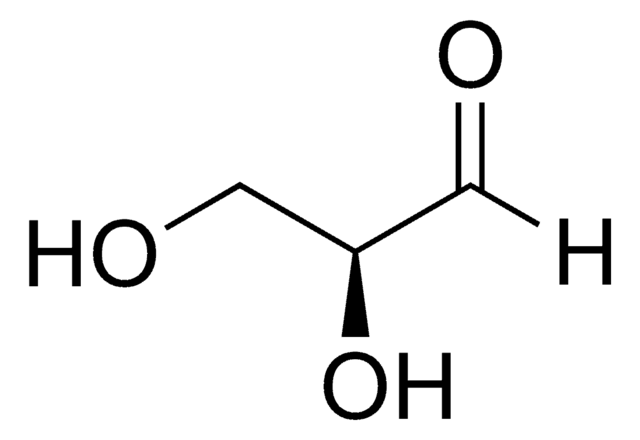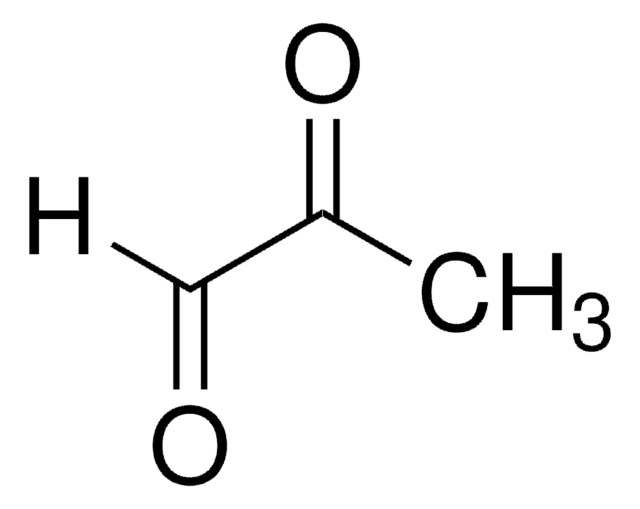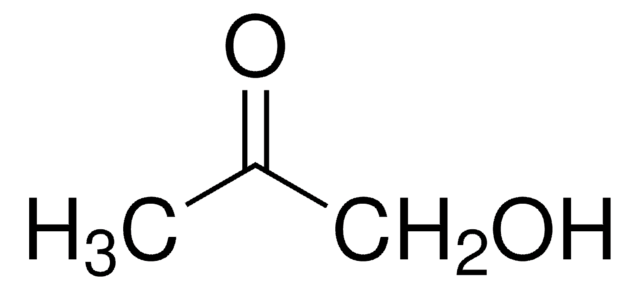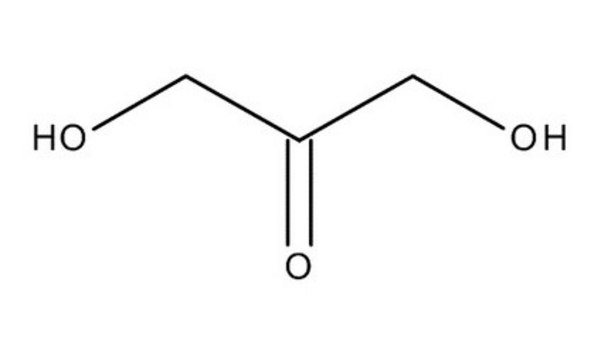推荐产品
方案
≥95.0% (TLC)
质量水平
光学纯度
enantiomeric ratio: ≥98.0:2.0 (HPLC)
浓度
1 M in H2O
储存温度
−20°C
SMILES字符串
C[C@H](O)C([H])=O
InChI
1S/C3H6O2/c1-3(5)2-4/h2-3,5H,1H3/t3-/m0/s1
InChI key
BSABBBMNWQWLLU-VKHMYHEASA-N
生化/生理作用
L-Lactaldehyde is an intermediate metabolite in the pyruvate metabolism pathway and is irreversibly produced from pyruvaldehyde via the enzyme aldehyde reductase, which is then irreversibly converted to propylene glycol via aldehyde reductase.
储存分类代码
10 - Combustible liquids
WGK
WGK 3
闪点(°F)
Not applicable
闪点(°C)
Not applicable
Y Zhu et al.
Journal of bacteriology, 171(2), 862-867 (1989-02-01)
Catabolism of the six-carbon compound L-fucose results in formation of dihydroxyacetone phosphate (C-1-to-C-3 fragment) and L-lactaldehyde (C-4-to-C-6 fragment) as intermediates. The fate of lactaldehyde depends on the respiratory growth conditions. Aerobically, lactaldehyde is oxidized to L-lactate by an NAD-linked dehydrogenase
Cristina Montella et al.
Journal of bacteriology, 187(14), 4957-4966 (2005-07-05)
The FucO protein, a member of the group III "iron-activated" dehydrogenases, catalyzes the interconversion between L-lactaldehyde and L-1,2-propanediol in Escherichia coli. The three-dimensional structure of FucO in a complex with NAD(+) was solved, and the presence of iron in the
THE METABOLISM OF LACTALDEHYDE. VI. THE REDUCTION OF D- AND L-LACTALDEHYDE IN RAT LIVER.
S M TING et al.
Biochimica et biophysica acta, 89, 217-225 (1964-08-26)
L Baldomà et al.
Journal of bacteriology, 170(1), 416-421 (1988-01-01)
L-Lactaldehyde is a branching point in the metabolic pathway of L-fucose and L-rhamnose utilization. Under aerobic conditions, L-lactaldehyde is oxidized to L-lactate by the enzyme lactaldehyde dehydrogenase, while under anaerobic conditions, L-lactaldehyde is reduced to L-1,2-propanediol by the enzyme propanediol
Seiya Watanabe et al.
The FEBS journal, 275(20), 5139-5149 (2008-09-17)
Fungal Pichia stipitis and bacterial Azotobacter vinelandii possess an alternative pathway of L-rhamnose metabolism, which is different from the known bacterial pathway. In a previous study (Watanabe S, Saimura M & Makino K (2008) Eukaryotic and bacterial gene clusters related
我们的科学家团队拥有各种研究领域经验,包括生命科学、材料科学、化学合成、色谱、分析及许多其他领域.
联系技术服务部门